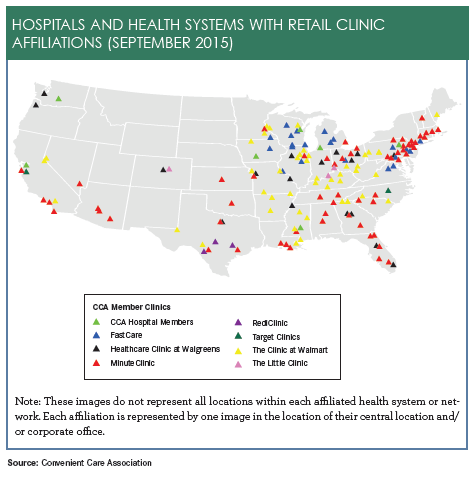Will More Retail Clinic Ownership Shift to Health Systems?
As more and more consumers seek care at retail clinics, health systems may want to follow in the footsteps of Advocate Health Care, which is taking ownership of 56 Walgreens Healthcare Clinics across the Chicago area in May.
As more and more consumers seek care at retail clinics, health systems may want to follow in the footsteps of Advocate Health Care, which is taking ownership of 56 Walgreens Healthcare Clinics across the Chicago area in May.

This isn’t the first time Walgreens has opted to outsource its retail clinic operations to a traditional health system. Last August, the drugstore chain announced a deal to open 25 new in-store retail clinics in Oregon and Washington State that will be owned and staffed by Providence Health & Services, the third-largest not-for-profit health system in the United States.
Historically, Walgreens and other retail pharmacy chains have staffed their clinics with their own employees, nurse practitioners, and physician assistants. The new health system-staffed model, however, seemingly allows drugstore chains to streamline their retail clinic operations and cut costs.
In addition to cutting costs, this approach helps establish and maintain a coordinated care continuum for patients and their providers, which is key as major health insurance plans such as United Healthcare and Aetna shift from the traditional fee-for-service model to value-based reimbursement under the Affordable Care Act (ACA).
Better coordination between retail clinics and health systems could also translate to more timely treatment and referrals for conditions such as gastroesophageal reflux disease (GERD) and other potentially problematic digestive health disorders—which is exactly what this issue ofContemporary Clinicis all about. The associated articles in this issue include “GERD in the Retail Clinic: When to Treat and When to Refer,” “Best Approaches to Acute Gastroenteritis,” “Counseling Pearls for IBS Patients,” and “PPIs and Antacids: How to Avoid Interactions.”
On a business note, don’t miss the article “How Retail Clinics Can Capture Newly Insured Patients,” which describes the retail health implications of health care coverage expansion through the ACA’s third open enrollment period that ended on January 31, 2016.
Thanks for reading!
Mike Hennessy
Chairman and CEO

